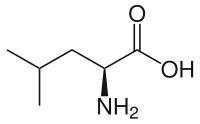The capacitor in the circuit above is charged. If switch S is closed at time t = 0, which of the following represents the magnetic energy, U, in the inductor as a function of time? (Assume that the capacitor and inductor are ideal.)
That's a relatively simple question with P+=50%. Now let's get to the answer: Show answerTo get to it we might use process of elimination: find all answers that are NOT correct and see what's left. First of all, question says "Assume that the capacitor and inductor are ideal". What that means right off the bat is that there should be no dissipation of energy. So answer D is incorrect right away. Also, we should remember that inductor's energy depends on current (contrast it to the fact that capacitor's energy depends on voltage across its plates). In initial conditions there is no current going thorugh the circuit because switch S is open. Hence, correct answer should have plot start at 0. This eliminates answers B, C, D (again). We are left with either E or A answers. You can pick one by again referring to ideal-ness or ideality of the circuit. Indefinite oscillations (answer A) are the only possibility in that case. By the way, the fact that this quite simple question has P+ of just 50% should tell you that it is not that hard to score high on Physics GRE. You can do it!







